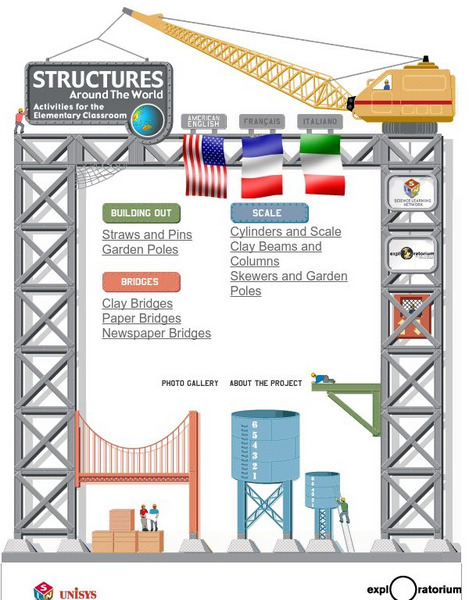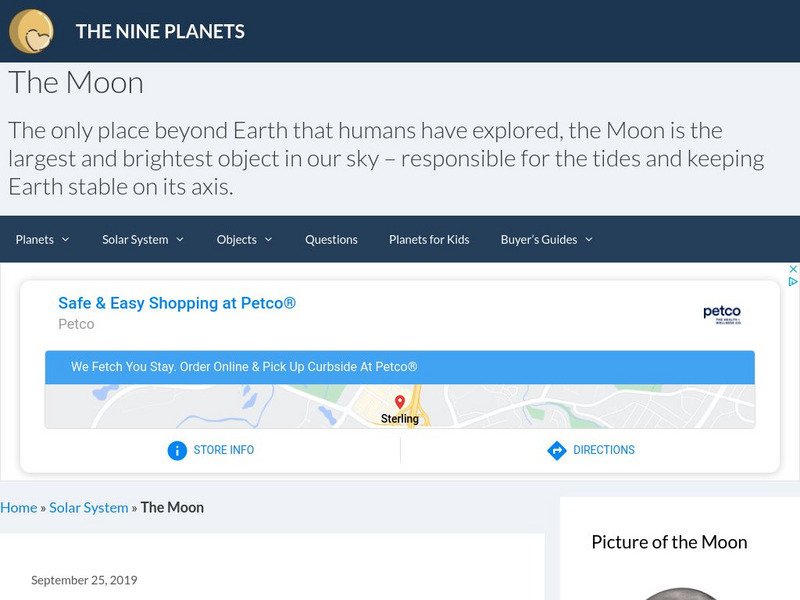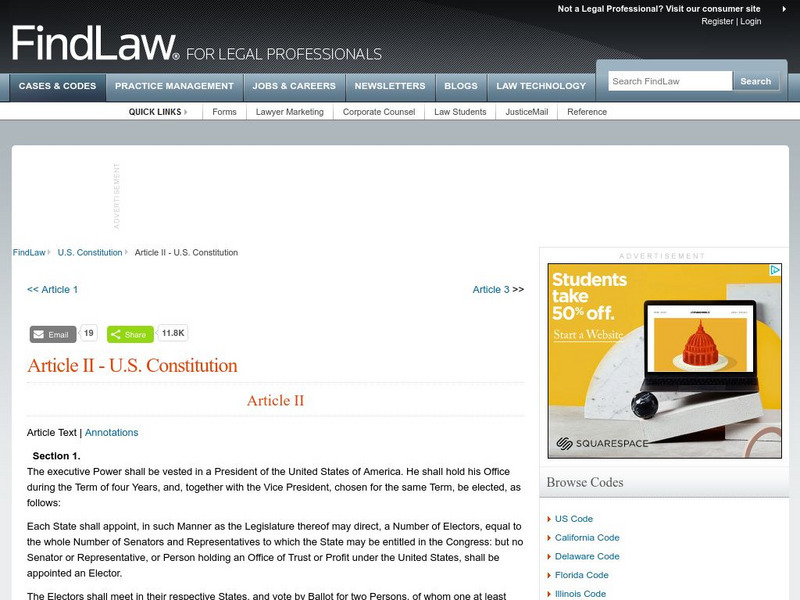University of Minnesota
University of Minnesota: Mechanics Problems: Force and Linear Kinematics Problem
This University of Minnesota site provides a series of contextually rich problems pertaining to force, Newton's second law of motion, and linear kinematics.
TeachEngineering
Teach Engineering: Measuring Pressure
Students learn first-hand the relationship between force, area and pressure. They use a force sensor built from a LEGO MINDSTORMS NXT kit to measure the force required to break through a paper napkin. An interchangeable top at the end of...
Georgia State University
Georgia State University: Hyper Physics: Earth Orbits
An equation for the law of universal gravitation is stated. The weight equation (W=m*g) is related to the law. An interactive JavaScript form allows the user to practice determining the force of gravity and the acceleration of gravity...
Massachusetts Institute of Technology
Mit: Open Course Ware: Courses: Physics Ii: Electricity and Magnetism
College-level physics course highlighting electricity and magnetism. This course is divided into several modules including electric fields, magnetic fields, electromagnetic forces, conductors and dielectrics, electromagnetic waves, and...
University of Colorado
University of Colorado: Physics 2000: More About Visualizing Electromagnetic Waves
Discusses the nature of an electromagnetic wave. Explains the oscillating electric field and represents it through clever graphics and animations.
CK-12 Foundation
Ck 12: Liquids
[Free Registration/Login may be required to access all resource tools.] In the following online tutorial students will describe a liquid according to the kinetic-molecular theory. They will also learn how a liquid exhibits surface...
American Museum of Natural History
American Museum of Natural History: Ology: Gravity
Flip the card, and learn about gravity.
Exploratorium
Exploratorium: Structures Around the World
How does that bridge stay up? What are the forces acting on that column? This site helps students understand how structures can be built by having them build their own. Also provides images of real structures for kids to compare with...
Texas Education Agency
Texas Gateway: 4.4 Newton's Third Law of Motion: Symmetry in Forces
By the end of this section, you will be able to understand Newton's third law of motion and apply Newton's third law to define systems and solve problems of motion.
Texas Instruments
Texas Instruments: Friction
Students study how the nature of two materials in contact, and the smoothness of their surfaces affect the magnitude of the sliding force of friction. They use a force sensor to measure frictional force for different surfaces.
Khan Academy
Khan Academy: Trig and Forces: The Pendulum
Using Newton's Laws of motion to calculate the acceleration of a pendulum as well as to compute and draw its position along the swing and move about the screen in a computationally based graphic system.
Community Learning Network
Community Learning Network: General Tsunami Resources
Come and learn more about tsunamis through this collection of resources. This site offers a wide variety of links to increase your knowledge of this powerful force of nature.
TeachEngineering
Teach Engineering: Floating and Falling Flows
Students discover fluid dynamics related to buoyancy through experimentation and optional photography. Using one set of fluids, they make light fluids rise through denser fluids. Using another set, they make dense fluids sink through a...
Exploratorium
Exploratorium: Science Snacks: Resonant Pendulum
An experiment in resonance that demonstrates how to make a pendulum swing widely by exerting only a small force.
Physics4kids
Physics4 kids.com: Forces of Nature
This resource provides a brief overview of force. The formula for force is explained along with some examples of force.
TeachEngineering
Teach Engineering: Mechanics Mania
Through ten lessons and numerous activities, students explore the natural universal rules engineers and physicists use to understand how things move and stay still. Together, these rules are called "mechanics." The study of mechanics is...
Better Lesson
Better Lesson: What Shapes the Land?
In this lesson plan, the teacher will read a book about different landforms. The children will learn about the features of the landforms and how they were shaped by natural forces. Then text features will be discussed. The children will...
Science and Mathematics Initiative for Learning Enhancement (SMILE)
Smile: Magnets, Electromagnets & Fields of Force
A teacher lesson plan which includes several student activities on magnetism, force fields, and magnetic induction. May provide an idea for a student project or lab investigation.
NOAA
Noaa: Our Restless Tides
This site provides an excellent explanation of the nature of tides and how they are formed. The one shortcoming is the use of the fictional "centrifugal force", but this is commonly misused in literature.
Georgia Department of Education
Ga Virtual Learning: Ap Physics 1: Work, Energy, and Power
The mathematical model for the relationships between work and energy serves to model physical problems and, more importantly, predict natural and man-made phenomena. Students discover the relationships which serve as a powerful...
Nine Planets
The Nine Planets: The Moon
Explore the mythology, structure, observational history, gravitational force, and orbit of Earth's Moon.
University of Colorado
University of Colorado: Physics 2000: Electromagnetic Waves
Using a student-teacher dialogue format, this page discusses the nature of light as an electromagnetic wave and the electromagnetic spectrum.
Thomson Reuters
Find Law: United States Constitution: Article Ii
Full text of Article II from the U.S. Constitution, as well as detailed annotations that explain the reasoning and subsequent impact of each clause and section of the Article. Content explores everything from the nature and scope of...
Georgia Department of Education
Ga Virtual Learning: Archetypes: Themes and Situations [Pdf]
This 24-page PDF presentation focuses on Archetypes including themes and situations. It includes the discussion of themes such as supernatural world, human relationships, forces of nature, and many more.




















